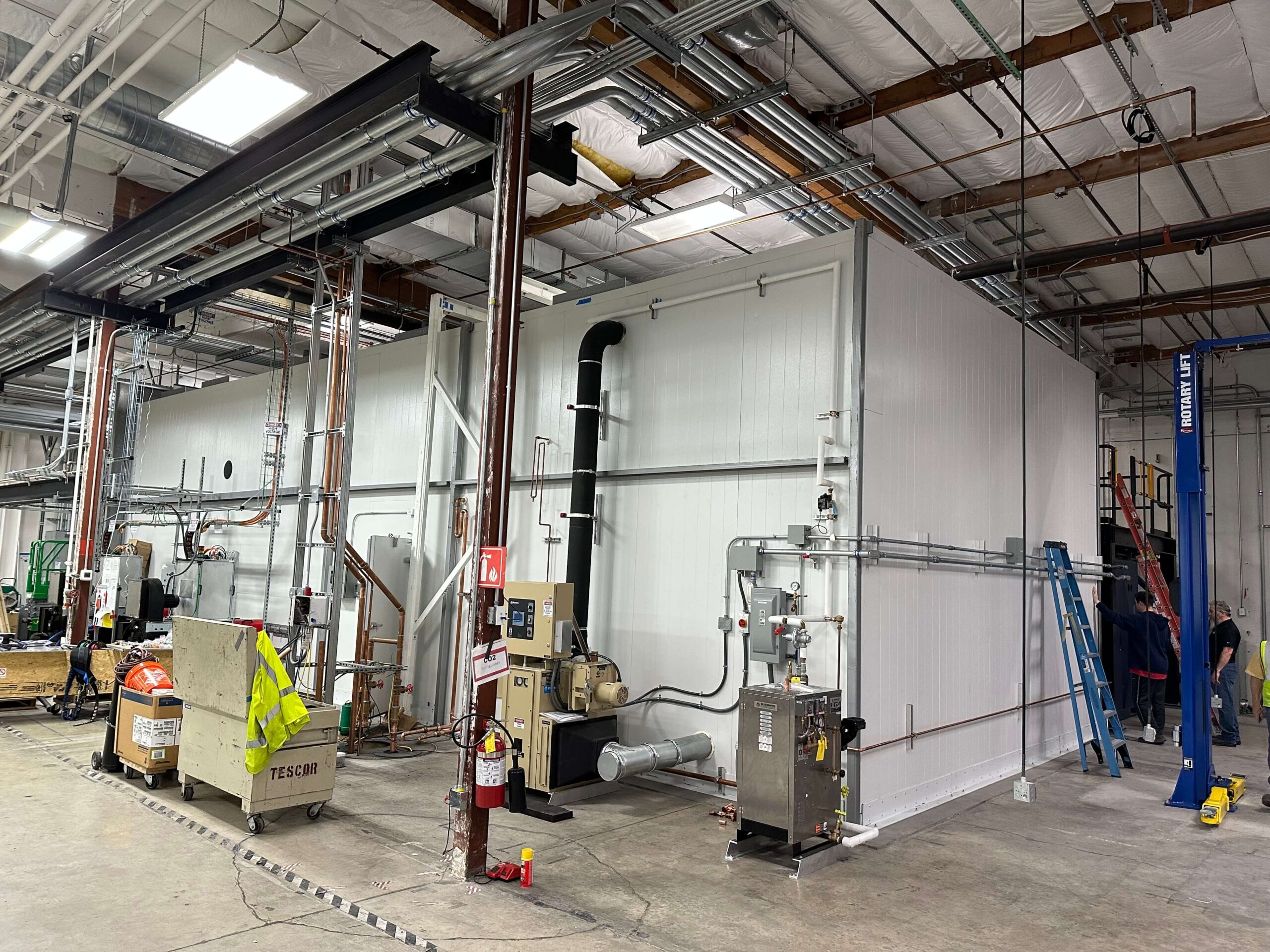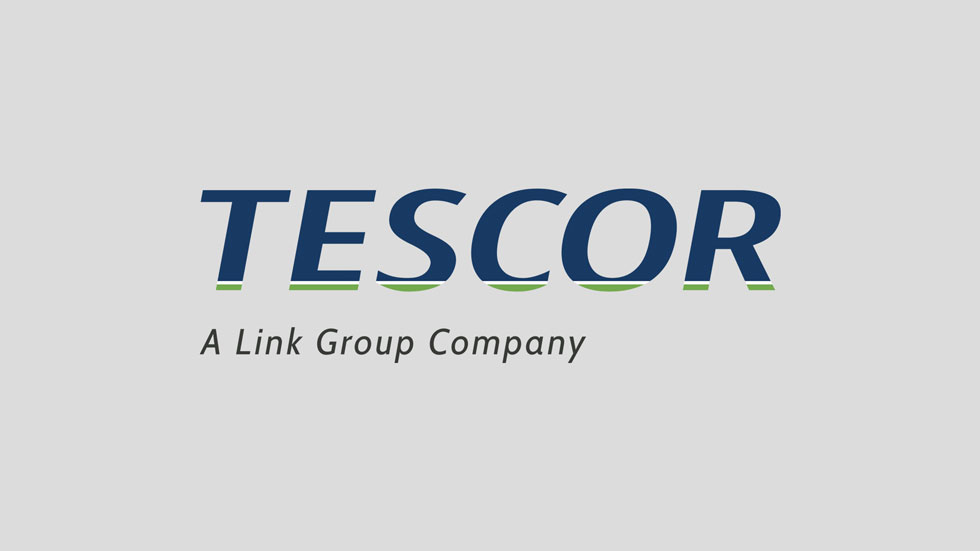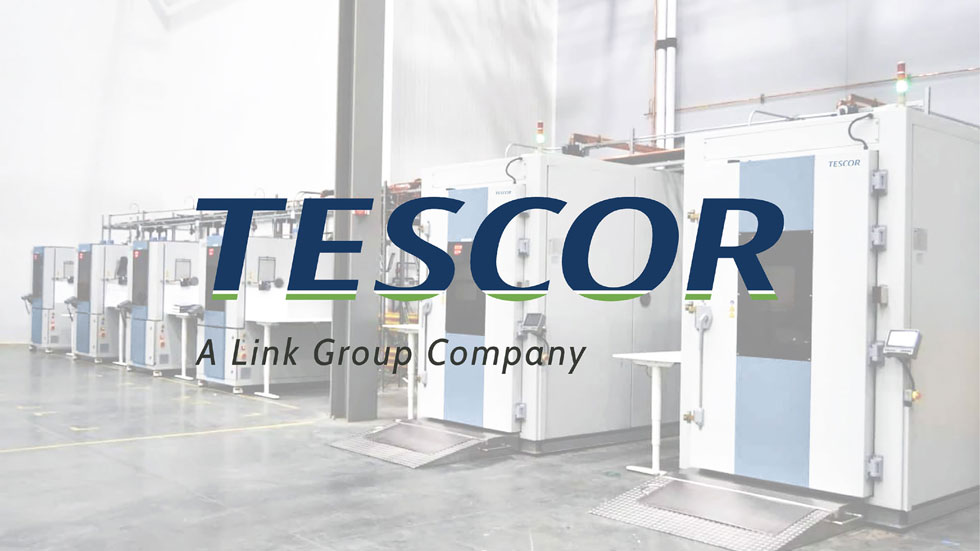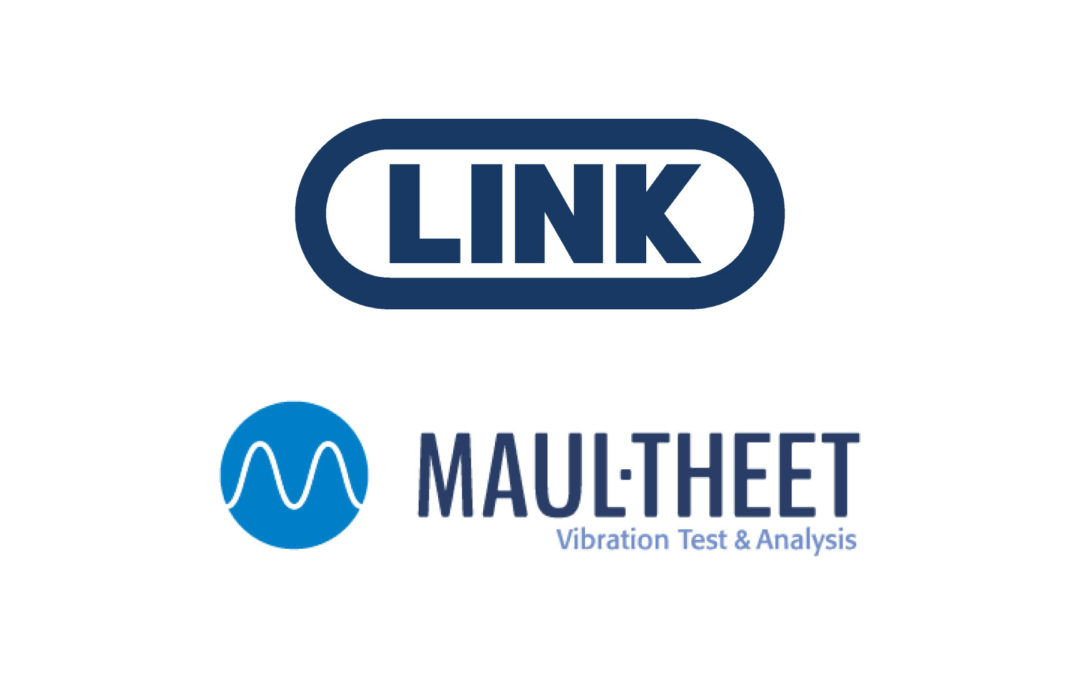As a collaborative effort between Tescor and Link Engineering Company, the Link Group, Inc. companies successfully installed a large drive-in chamber for new electric vehicle environmental simulation testing for a California-based customer. The cross-functional LINK team supported this installation using their highly experienced staff across four business units, ranging from multiple locations in Michigan to Pennsylvania. This largescale support allowed for quick and efficient installation as well as a vast knowledge base provided by the LINK team.
An automotive OEM and LINK customer was in need of a walk-in-style environmental chamber for the testing of a newly-developed electric vehicle. As an engineered-to-order thermal solutions provider, Tescor, a Link Group Company, was called upon to deliver a custom-built chamber that matched the customer’s unique specifications. The chamber was required to encase the full vehicle while simulating rigorous environmental conditions.
The chamber is designed so that the vehicle can drive directly into the chamber and park facing the evaporator as the tests are conducted. Thus, the exterior dimensions of the chamber are nearly 51 feet long by 21 feet wide and 15 feet tall. Tescor’s innovative solution includes the ability for the customer to attach a vehicle to hubcap dynamometers and run at simulated speeds up to 177mph. The chamber provides an environment with temperatures between -40°C and 60°C with humidity ranges between 20% and 65%. The vehicle is ran at steady state conditions at the extremes of the above ranges. Using Tescor’s chamber, the customer also has the ability to test the vehicle in a ramping temperature situation of 20°C to -20°C over 100 minutes.
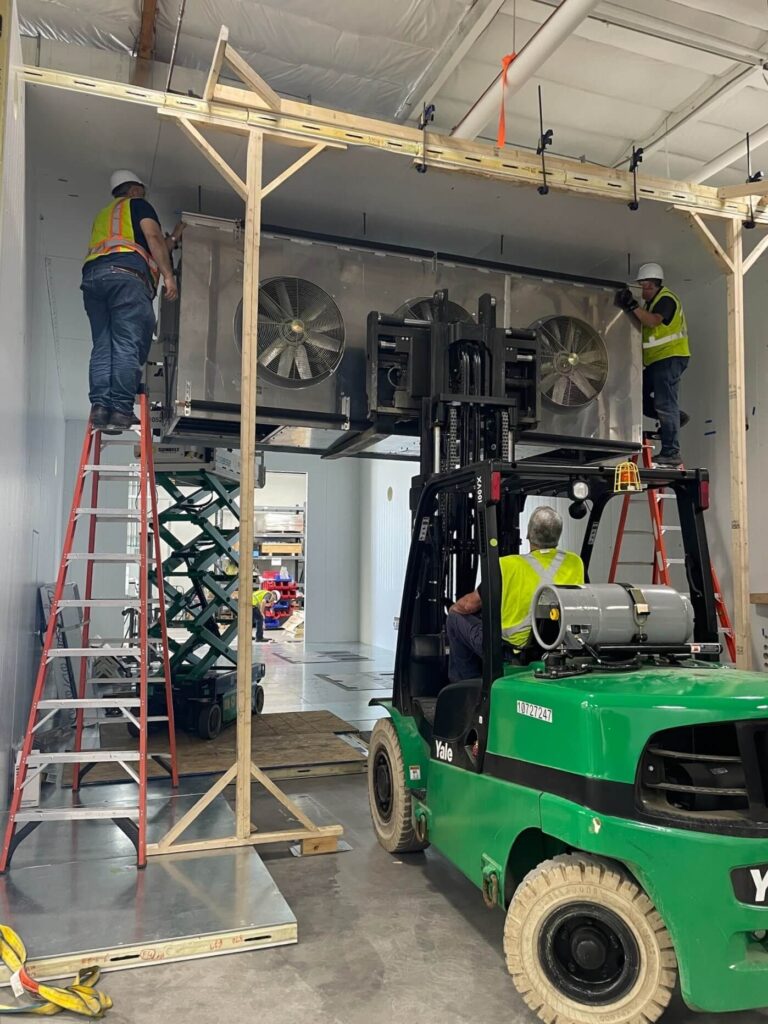
The chamber itself was constructed one panel at a time using strategic interlocking panel technology. The build started from the front of the chamber at the doors: first the flooring was laid, followed by part of a wall, and finally, the ceiling. The ceiling was continuously supported as the team moved to the back of the unit onto the next section. Using a forklift, the LINK team was required to lift sizeable beams to the top of the chamber to secure the ceiling in place one section at a time. Since this chamber will reside in California, an additional cage was needed around the structure to support it in the event of an earthquake. The evaporator also received its own external supportive structure.
Four beams were placed vertically, two on either side of the chamber, each supporting a single beam that runs across the width of the chamber. The evaporator was then threaded to these beams through the ceiling. The evaporator, which is approximately 15 feet long, 6 feet wide, and 5 feet high, was suspended using a frame constructed outside of the chamber at 22 feet long and 16 feet high. Every panel was numbered and predrilled at Tescor to run conduits, cooling lines, and more, exemplifying the level of detail and prework put into the product prior to its arrival at the customer’s facility.
Installing the chamber took approximately a week and a half to fully erect and assemble. The team consisted of staff members across four LINK facilities, including seven for the first week and six for the second week, with an electrician arriving from Tescor toward the end of the installation. Team members hailed from the Tescor facility in Westminster, PA, as well as several LINK sites across Plymouth, MI; Dearborn, MI; and Ottawa Lake, MI. The unique skill sets and expertise possessed by the LINK team created a complementary environment and allowed for a quick turn-around of a complex task.
The team diligently worked approximately 100 hours on the first week and 100 hours on the second week, with the chamber being fully operational on week three. The work was completed under close supervision from the customer’s safety team. Thanks to the collaboration of team members across LINK, the customer was provided with remarkable service and support, in addition to a customized environmental chamber for state-of-the-art automotive testing.
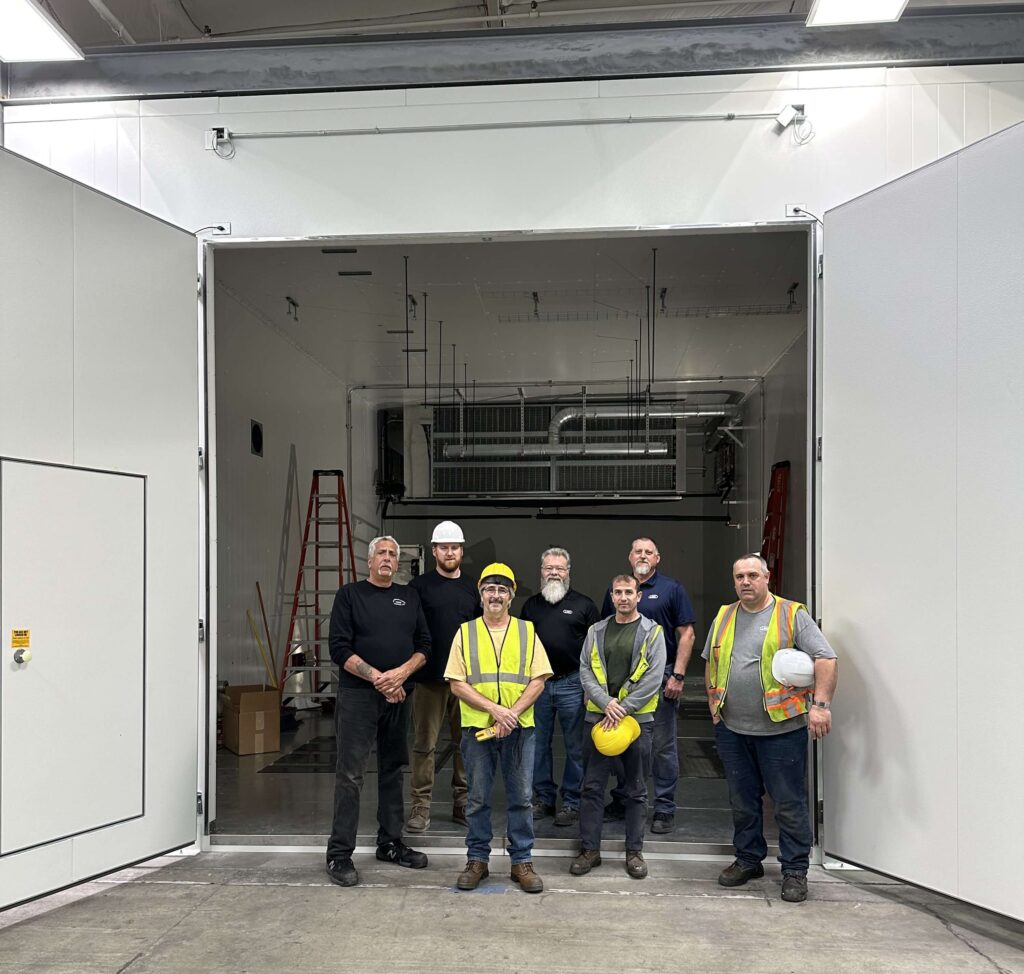
Link Group, Inc. (LINK), parent to Link Engineering Company, Link Industries, and Tescor, consists of businesses that offer customized solutions, with a focus on delivering high value to each of their customers. Offerings consist of the design and manufacture of customized, high precision test, research, simulation, quality control and thermal solution equipment; comprehensive test services; and high precision cutting tools. LINK’s corporate headquarters are in Plymouth, Michigan (US), with manufacturing and design facilities, laboratory and vehicle test operations, and support teams around the world.
